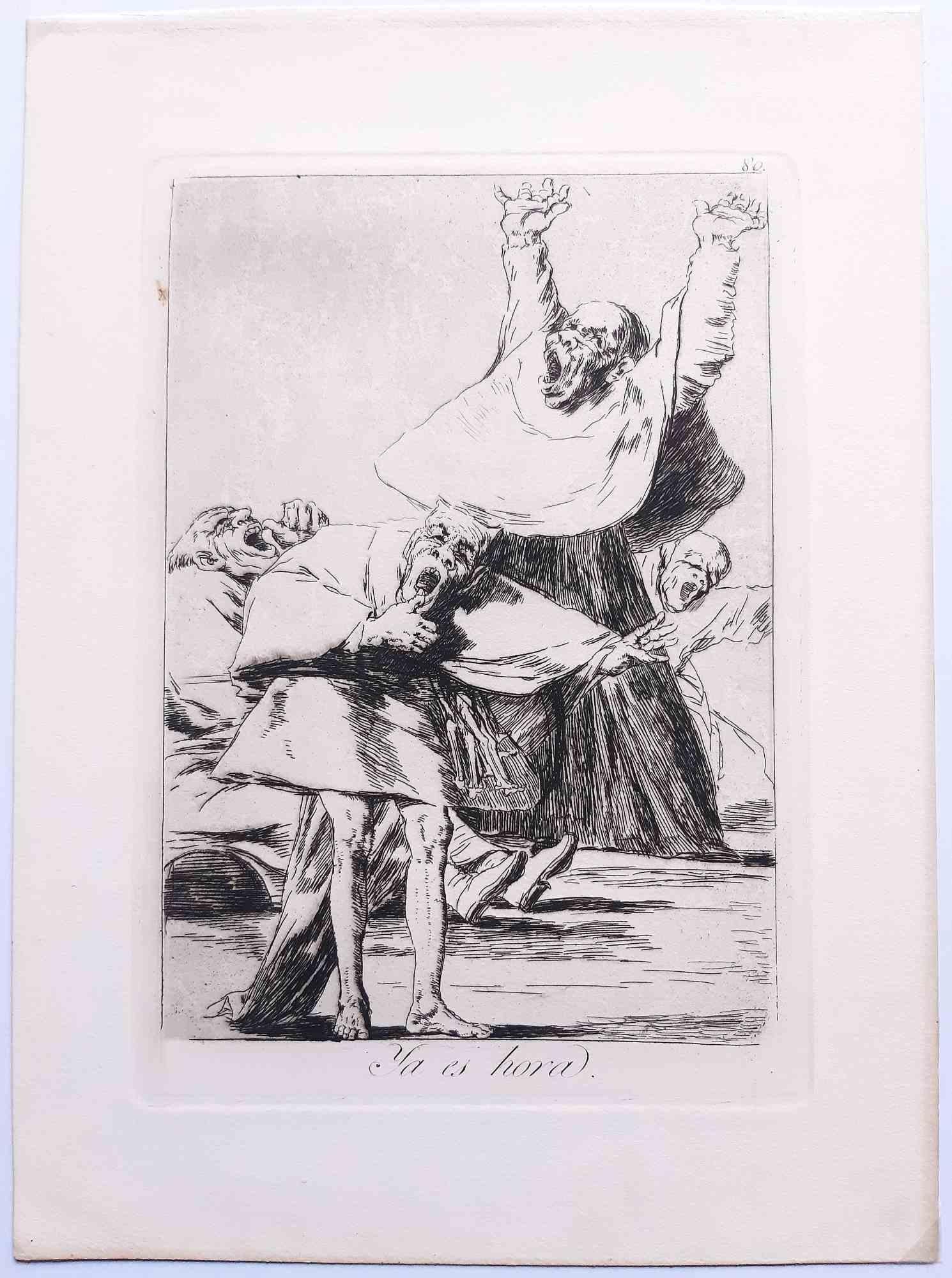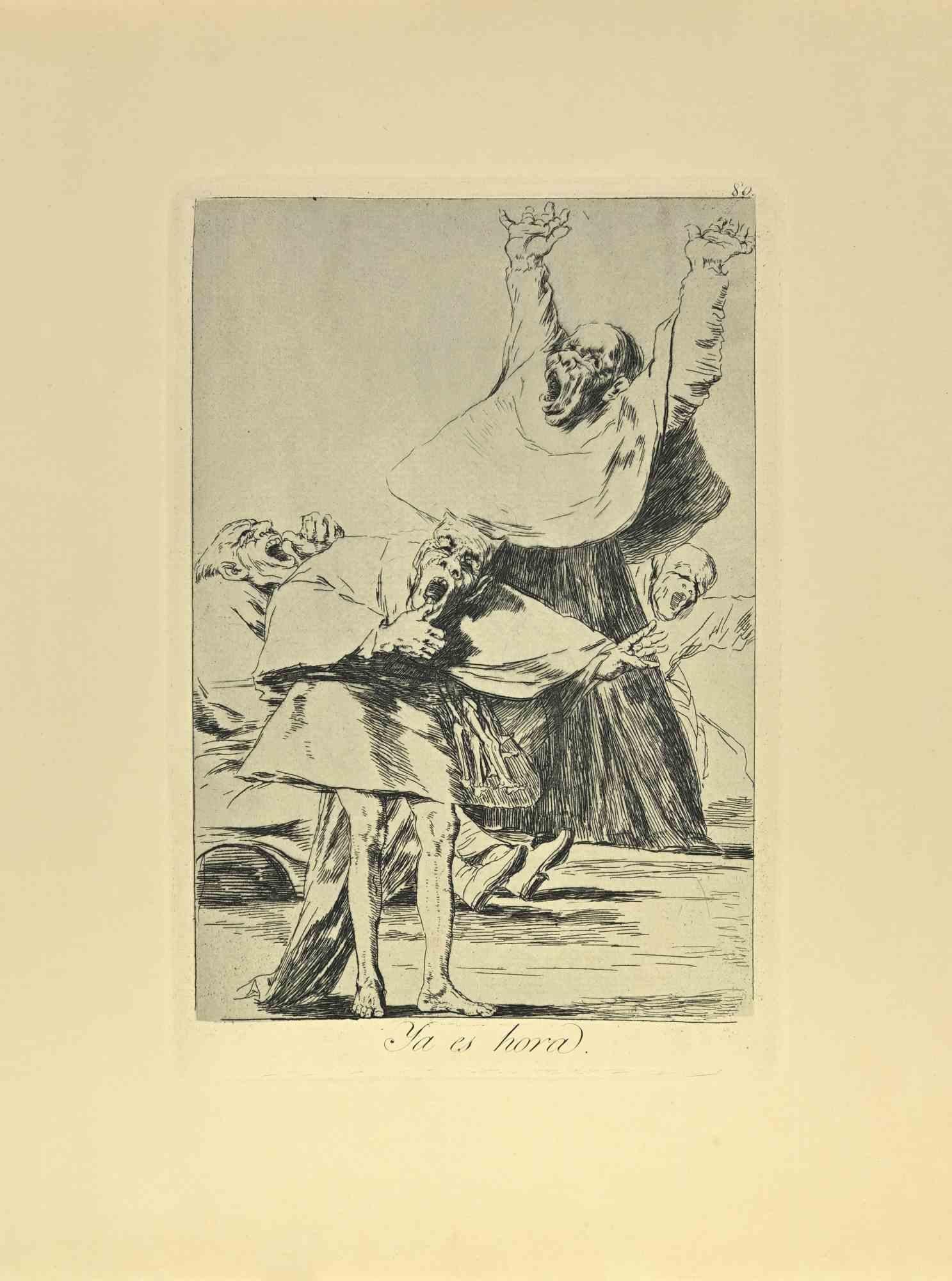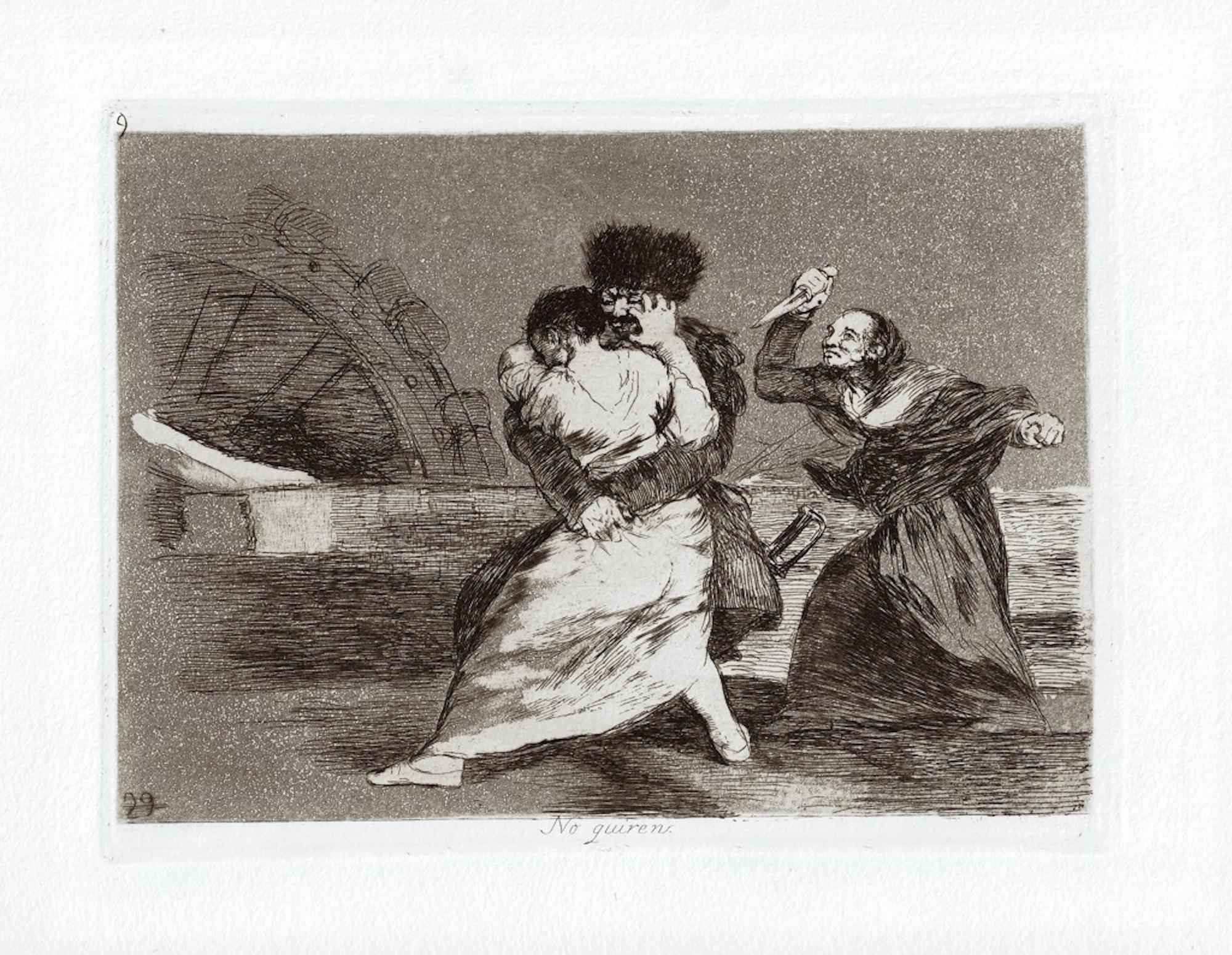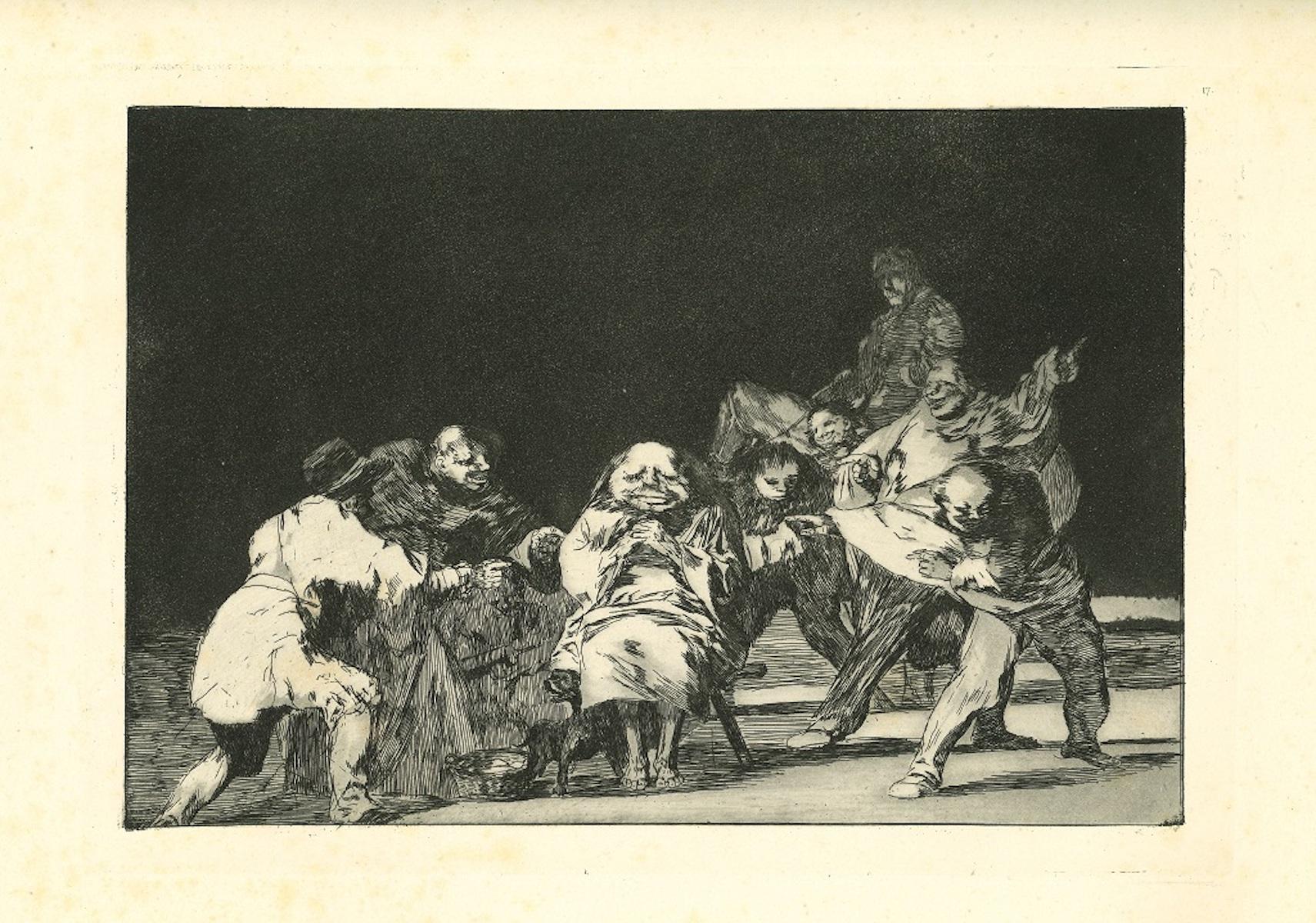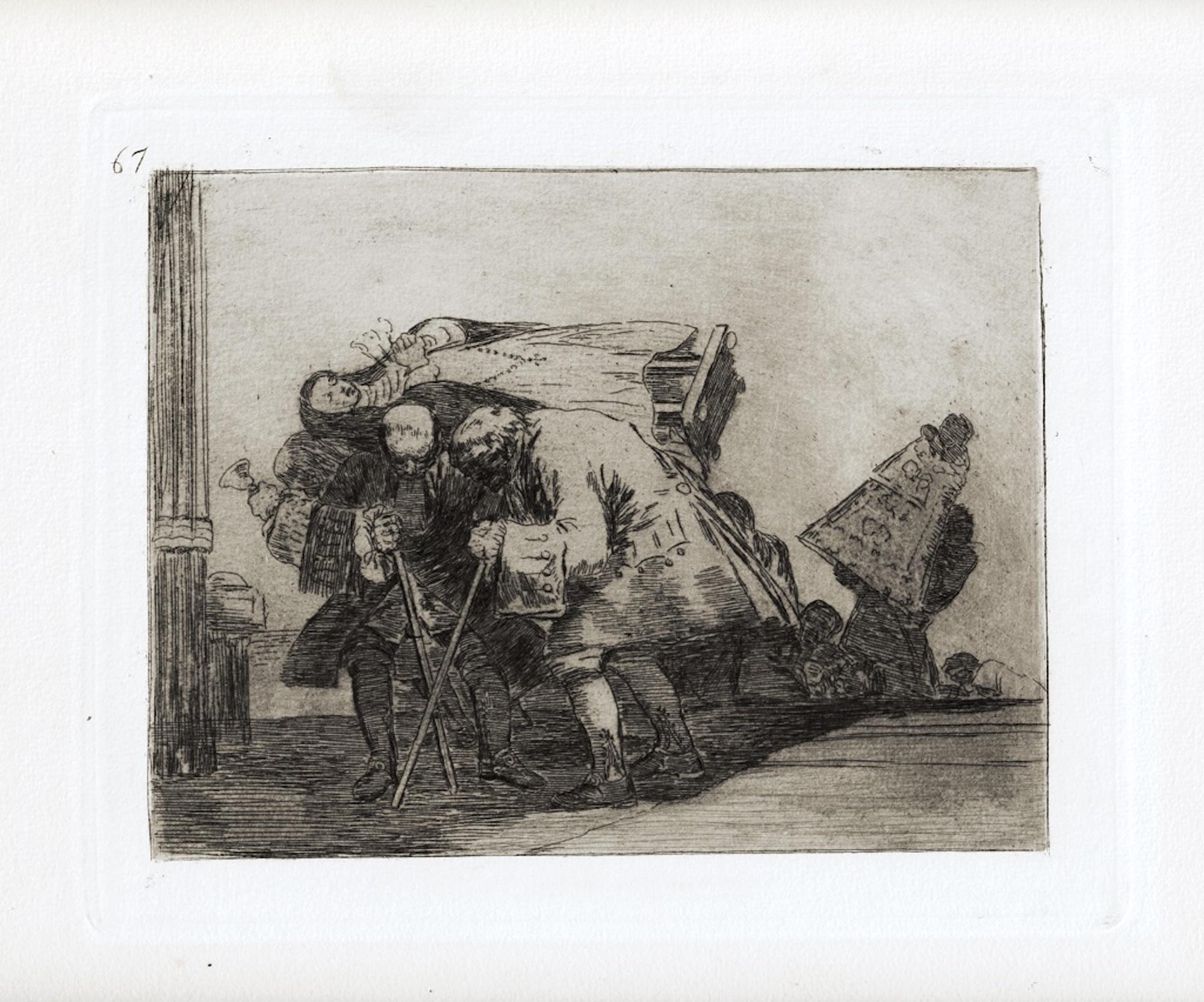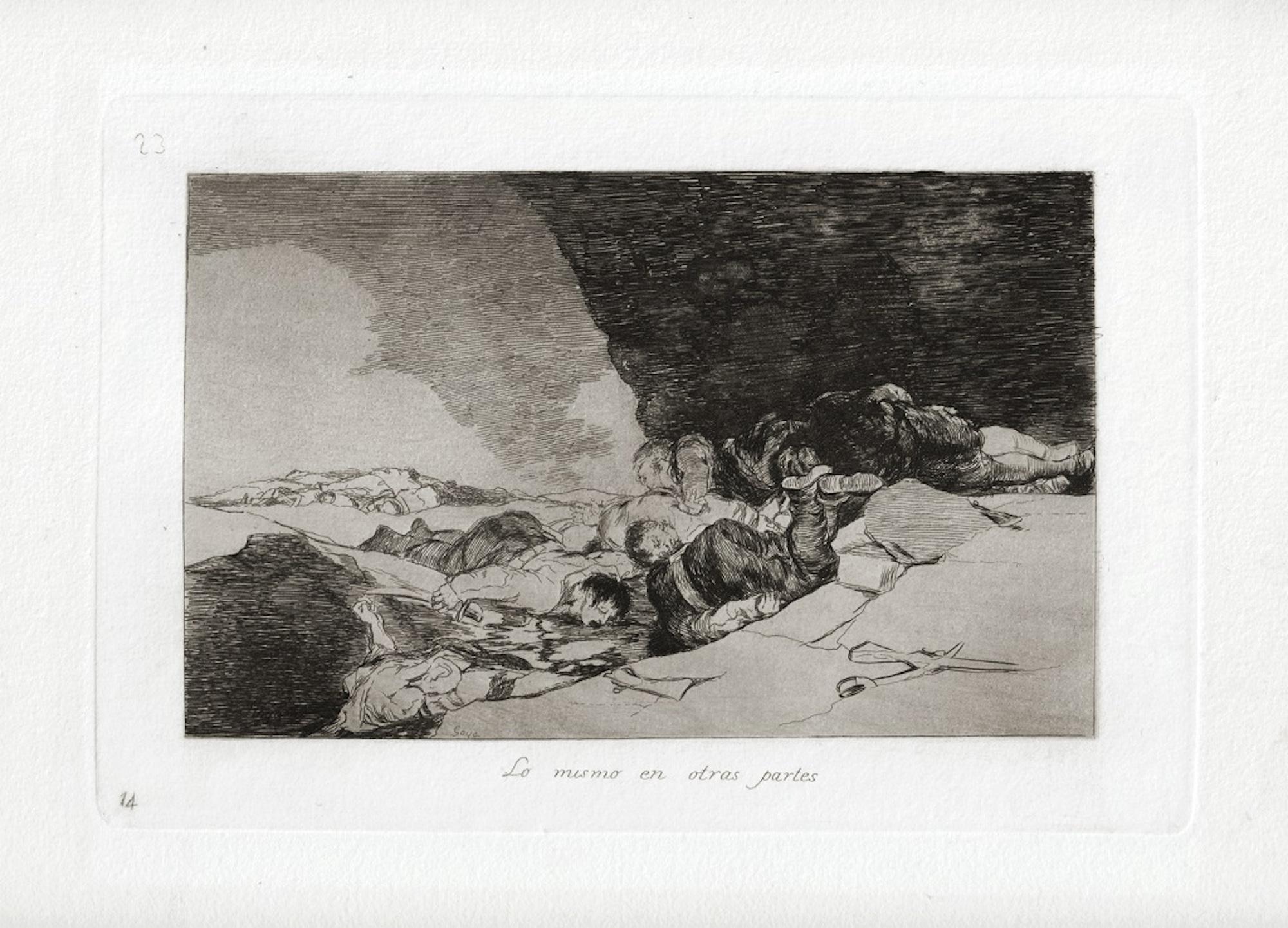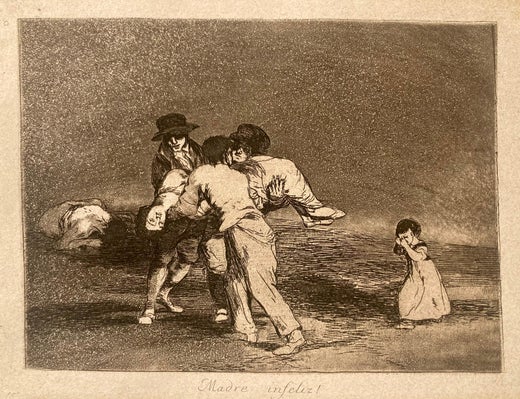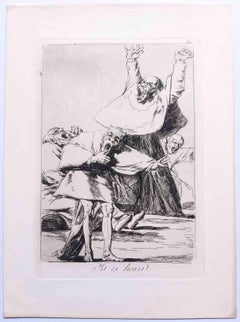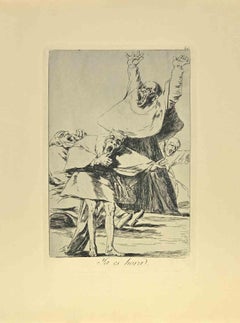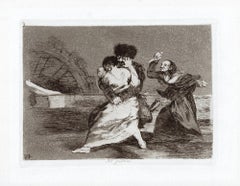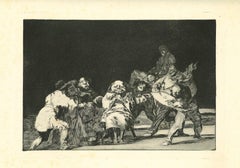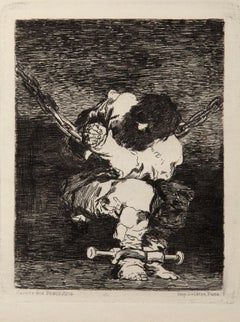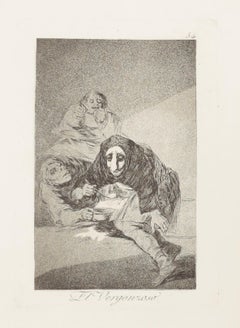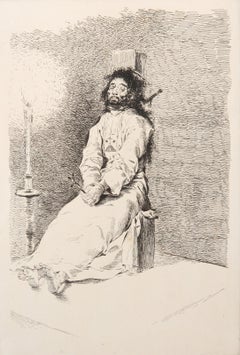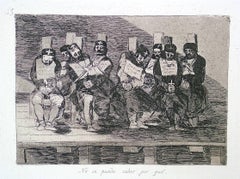Items Similar to Que se la Llevaron! - Etching by Francisco Goya - 1799
Want more images or videos?
Request additional images or videos from the seller
1 of 2
Francisco GoyaQue se la Llevaron! - Etching by Francisco Goya - 17991799
1799
$6,725.98
£4,986.72
€5,600
CA$9,239.92
A$10,086.88
CHF 5,310.87
MX$120,829.13
NOK 67,924.06
SEK 62,015.80
DKK 42,669.97
About the Item
Que se la Llevaron! is an original etching realized by Francisco Goya in 1799, from Los Caprichos series.
The artwork is the plate 8 (as printed on plate on the higher right margin) from the series Los Caprichos, first edition.
Good conditions.
Los Caprichos.
Put on sale the 6 February 1799, at the end of the last carnival of the century, Los Caprichos, first Goya’s printed cycle created as a unit, can be located in a period of transition in the artist’s life. Actually, in the last decade of the eighteenth century, there were some facts very important for Goya, as the illness and the hearing loss.
These engravings are made in 1797 in Madrid, after the artist’s stay in Andalusia, where he was guest of the Duchess of Alba.
In 1797 Gaspar Melchor de Jovellanos, the most important deputy of the spanish Age of Enlightenment and Goya’s protector, accepted the Ministry of Mercy and Justice and started to promote a splendid environment for the artistic expression. The same year, the first version of this set (72 engravings) was printed entitled as Sueño 1º Idioma Universal. In january of 1799, the definitive edition (80 engravings) of the Caprichos was published.
This cycle can be divided into two parts, each of these is introduced by a self-portrait of the artist.
In the first self-portrait, that anticipates 41 realistic scenes (2-42), Goya represents himself as a middle-class man who has a sarcastic vision of the world, the main subject of his Caprichos. In the second portrait, he images himself asleep amidst his drawing tools, with monsters behind him produced by the reason dulled.
The Caprichos are a strong aesthetic and social provocation; french poet Baudelaire said about Goya’s masterpiece: “ No one artist more than Goya dared the sense of the absurd possible. All these contortions, these bestial faces, these diabolic sneers are infused with humanity […] it’s impossible find the suture, the point of union between real and fantastic; it’s a line so unclear that also the finest analyst can’t draw, in an art that is, at the same time, so transcendent and natural”.
Francisco José de Goya y Lucientes (March 30th 1746 - Bordeaux, April 16th 1828), Francisco Goya, the Spanish painter and printer, was one of the rare artists that, through their work, not only gain the recognition and admiration of their contemporaries, but influence the development of future art.
Born in Fuentedetodos to a middle-class family originating from Aragona, he was the forth of six brothers.
Studying with José Buzàn y Martinez, and in Madrid under Velasquez, and entered the group of R. Mengs where he met Tiepolo. After going to Roma and Venice, he returned to Spain to paint the dome of Santa Maria of Pilar basilica in Zaragoza with frescoes showing Tiepolo's influence. In Madrid he was uncomfortable with his academic style, despite the fame gained in the king's court for his very lively style and refined artistic taste. He had started his most productive and busy period of his life. He returned to Zaragoza to paint frescoes in the cathedral (commissioned by Bayeu) but left the work incomplete and instead started to paint portraits and also started “Caprichos”.
Goya's main success was under the reign of Carlo IV but when the power of Ferdinandi VII increased under the French occupation, he went into exile in Bordeaux. In 1799 he painted the family portrait of Carlo IV and attracted the friendship of the king. Goya was close to the poor, something that is reflected in the “Desastres de la guerra” print, and to which he dedicated his work during his stay in France. Goya travelled to Zaragoza to paint the companies of the Spanish resistance, but left Spain for Bordeaux after the onset of deafness and painted the Milkmaid of Bordeaux. He died in Bordeaux in 1828.
- Creator:Francisco Goya (1746 - 1928, Spanish)
- Creation Year:1799
- Dimensions:Height: 8.47 in (21.5 cm)Width: 5.99 in (15.2 cm)Depth: 0.08 in (2 mm)
- Medium:
- Movement & Style:
- Period:1790-1799
- Framing:Framing Options Available
- Condition:Insurance may be requested by customers as additional service, contact us for more information.
- Gallery Location:Roma, IT
- Reference Number:Seller: M-1130051stDibs: LU65037298362
Francisco Goya
Francisco José de Goya y Lucientes (1746-1828) was a Spanish romantic painter and printmaker. He is considered the most important Spanish artist of the late 18th and early 19th centuries. His works often contained a social message, like in his "Disasters of War" series. Immensely successful in his lifetime, Goya is often referred to as both the last of the Old Masters and the first of the moderns. He was also one of the great portraitists of his time.
About the Seller
4.9
Platinum Seller
Premium sellers with a 4.7+ rating and 24-hour response times
1stDibs seller since 2017
7,874 sales on 1stDibs
Typical response time: 1 hour
- ShippingRetrieving quote...Shipping from: Roma, Italy
- Return Policy
More From This Seller
View AllYa es hora from Los Caprichos - Etching by Francisco Goya - 1878
By Francisco Goya
Located in Roma, IT
Ya es hora from Los Caprichos is an original artwork realized by the artist Francisco Goya and published for the first time in 1799.
Etching and aquatin...
Category
1790s Modern Figurative Prints
Materials
Etching
Ya es Hora - Etching and and Aquatint by Francisco Goya - 1881
By Francisco Goya
Located in Roma, IT
Ya es Hora. is a black and White aquatint, drypoint and etching printed in blue-black ink on laid paper from Caprichos realized after Francisco Goya in 1881-1886.
6th Edition.Very g...
Category
1880s Modern Figurative Prints
Materials
Etching
No Quiren - Etching by Francisco Goya - 1863
By Francisco Goya
Located in Roma, IT
No quiren is an original artwork realized by the great Spanish artist Francisco Goya in 1810.
Original Etching on paper.
The artwork belongs to the famous series "Los Desastres de la Guerra" realized during the years of the Independence Spanish War, published in 1863 and representing the horrors and the despair of the War.
Signature appears upside down in the lower right corner. Titled on the lower central margin "No Quiren" (Not Even Them). Numbered on the lower left corner. Etching N. 9.
Very good conditions.
A Napoleonic soldier...
Category
1860s Old Masters Figurative Prints
Materials
Etching, Aquatint
La Lealtad - Original Etching - 1875
By Francisco Goya
Located in Roma, IT
La lealtad - from Los Proverbios is an original black and white etching realized by Francisco Goya (1746-1828).
The artwork is the plate n. 17 from of...
Category
1870s Old Masters Figurative Prints
Materials
Etching, Aquatint
Esta no lo es Menos - Etching by Francisco Goya - 1863
By Francisco Goya
Located in Roma, IT
Esta no lo es menos is an original artwork realized by the great Spanish artist Francisco Goya in 1810.
Original Etching on paper.
The artwork belongs to the famous series "Los D...
Category
1860s Old Masters Figurative Prints
Materials
Etching, Aquatint
Lo Mismo en Otras Partes - Etching by Francisco Goya - 1863
By Francisco Goya
Located in Roma, IT
Lo Mismo en otras partes is an original artwork realizedb by the great Spanish artist Francisco Goya in 1810.
Original Etching on paper.
The artwork belongs to the famous series "Los Desastres de...
Category
1860s Old Masters Figurative Prints
Materials
Etching, Aquatint
You May Also Like
The Custody is as Barbarous as The Crime, Etching by Francisco de Goya
By Francisco Goya
Located in Long Island City, NY
Francisco de Goya, Spanish (1746 - 1828) - The Custody is as Barbarous as The Crime, Year: circa 1810, Medium: Etching and burin on cream laid paper, Image Size: 3.75 x 3 inches, Si...
Category
1810s Surrealist Figurative Prints
Materials
Etching
El Vergonzoso (Plate 54) (Los Caprichos Series)
By Francisco Goya
Located in London, GB
Francisco Jose Goya Y Lucientes
El Vergonzoso (Plate 54)
(Los Caprichos Series)
1799
Etching with aquatint
31.5 x 20.5 cms (12.4 x 8.1 ins)
Category
Late 18th Century Figurative Prints
Materials
Etching
Le Supplice du Garrot, Old Masters Heliogravure Etching by Francisco de Goya
By Francisco Goya
Located in Long Island City, NY
Francisco de Goya, After by Amand Durand, Spanish (1746 - 1828) - Le Supplice du Garrot, Year: 1875, Medium: Heliogravure, Size: 12.5 x 8.5 in. (31.75 x 21.59 cm), Printer: Amand Durand, Description: An Amand Durand etching...
Category
1870s Old Masters Figurative Prints
Materials
Etching
One Can't Tell Why - Proof from the Disasters of War
By Francisco Goya
Located in New York, NY
Francisco José de Goya y Lucientes (1746 Fuendetodos – Bordeaux 1828), No se puede saber por qué – One can’t tell why ca. 1808–1814, etching, burnished aquatint, drypoint, an...
Category
1810s Old Masters Figurative Prints
Materials
Drypoint, Etching, Aquatint
MADRE INFELIZ (Unhappy Mother)
By Francisco Goya
Located in Santa Monica, CA
FRANCISCO GOYA (1746 - 1828)
MADRE INFELIZ (Unhappy Mother) circa 1811-13. (Delteil 169; Harris 170)
Aquatint with etching, Plate 50 From Los Disastres de la Guerra. (Disasters of ...
Category
1810s Old Masters Landscape Prints
Materials
Etching, Aquatint
TAMBIEN ESTO
By Francisco Goya
Located in Aventura, FL
Tambien esto / So is this (Disasters of War, plate 43, Harris 163, Delteil 162). Original etching, burnished aquatint, and burnisher, c. 1808-1814. The clergy are running; their floc...
Category
Early 19th Century Romantic Figurative Prints
Materials
Drypoint, Etching, Paper
$1,600 Sale Price
20% Off
More Ways To Browse
Antique Drawing Tools
Dali Hippocrates
Dali Horseman
Dali Illustrates Casanova
Dali Man Of La Mancha
Dali Othello
Dali Pig And Pepper
Dali Purgatory Signed
Dali Saba
Dali Signed Ecstatic
Dali Skeleton
Dali Spinning Man
Dali The Annunciation
Dali Thus Was Earth Created
Dame Laura Knight On Sale
Danos Flower Shop
Daumier Actualites
David Ham
